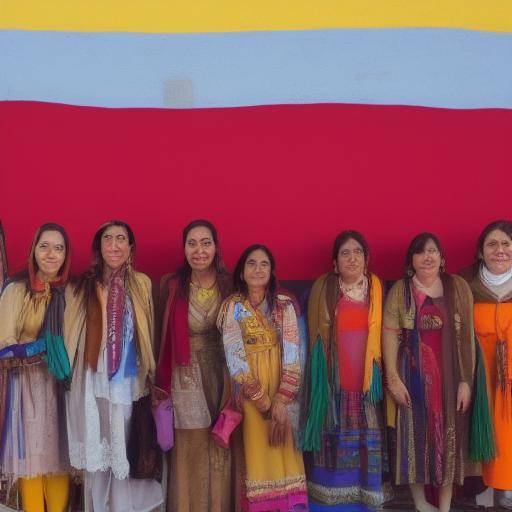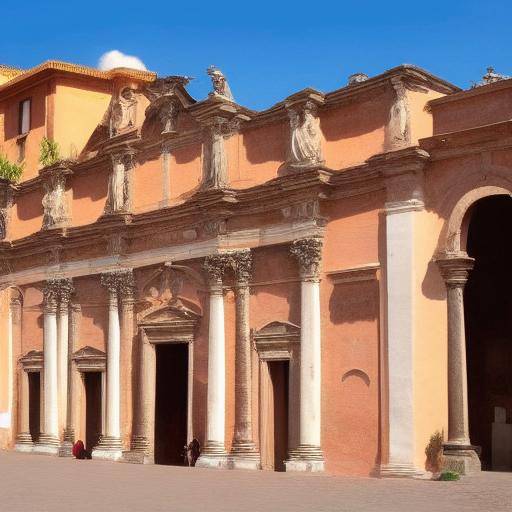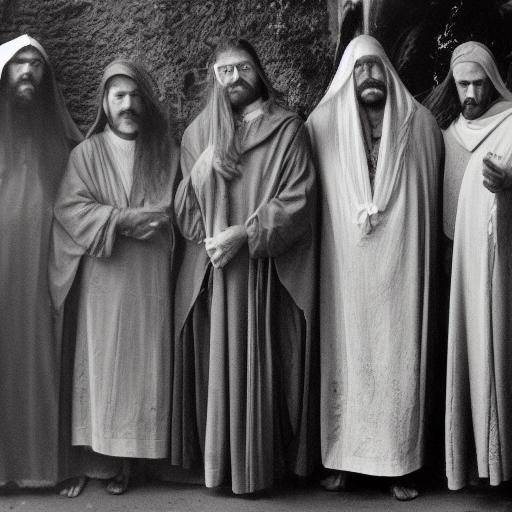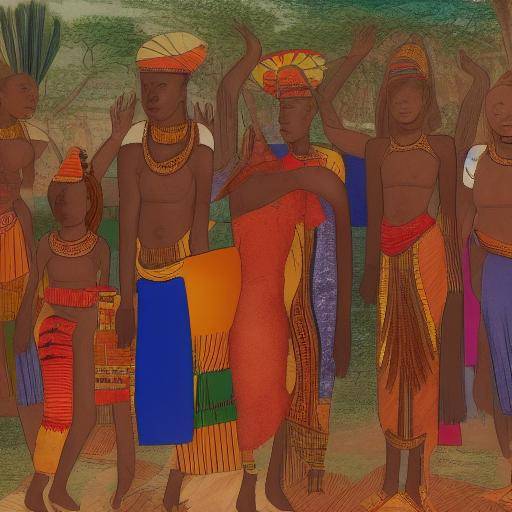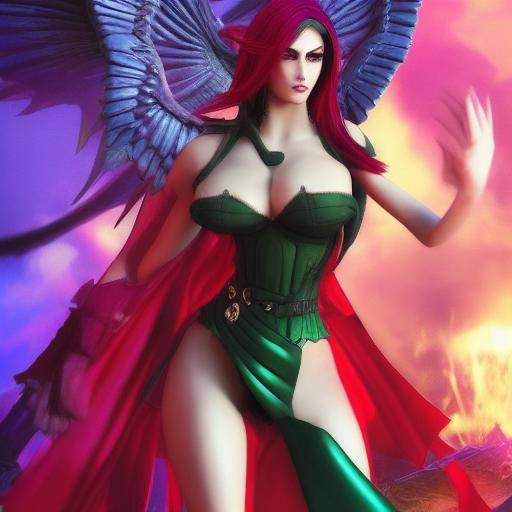
Celtic mythology has been home to many divine entities, each with its own essence and unique attributes. However, no resonance with as much force as Morrigan, the enigmatic goddess associated with war, prophecy and destiny. In this deep exploration, we venture to unravel the mysteries surrounding this legendary figure, from its historical value to its current influence. Join us on this journey that leads us to unearth the secrets of Morrigan, the goddess of war and destiny.
Introduction
Since time immemorial, ancient cultures have venerated gods and goddesses related to fundamental aspects of human existence. These divinities personify not only natural phenomena, but also emotions, internal and external battles, and fate that shape the course of our lives. Morrigan, the mighty Celtic goddess, personifies the essence of war and destiny, manifesting an imposing presence that goes beyond the battlefields and the paths of the future.
History and Background
Legendary Origins
Morrigan's origins are intertwined with the deep roots of Celtic mythology. It appears as a complex and multifaceted figure, often represented as a warrior woman with the ability to change shape, manifesting itself as a raven, symbol of death and prophecy. This duality embodies the role of Morrigan as a messenger of destiny, bearer of omens and protector of those destined to fall into battle.
Morrigan's legend goes back to Ireland's oldest times, where his influence was intertwined with the lives of kings and heroes. Her ominous presence and her ability to influence the outcome of the battles made her a revered and feared figure.
Evolution and Meaning
As Celtic mythology intertwined with the vicissitudes of history, the figure of Morrigan acquired new nuances and meanings. His role as the guardian of war and protector of those destined to die in combat placed it at the center of the war aspirations of the ancient Celts. Their presence inspired both fear and respect, as their influence could determine the result of the most fierce battles.
Morrigan's connection with the ravens became more and more prominent, symbolizing the link between death, prophecy and destiny. The stories and myths that revolve around their presence intertwined with the lives of heroes and rulers, marking crucial milestones in Celtic history and mythology.
Deep analysis
The figure of Morrigan is not only limited to his role as a deity of war and destiny, but transcends into deeper meanings. Their presence symbolizes the inevitable intersection between life and death, the power of prophecy and the unchanging nature of destiny. The ability to influence future events and the unshakable connection to death give Morrigan a power that goes beyond earthly battles.
Morrigan's legacy has spread over the centuries, keeping its influence on different cultural and artistic manifestations. His presence endures in the collective imagination, reminding mankind of the eternal struggle between human will and inexorable destiny.
Comparative analysis
Crows: Messengers of Destiny
The crow, a recurring symbol in the figure of Morrigan, has a rich symbolic burden that transcends cultures and borders. In Celtic mythology, the ravens were considered messengers of the beyond, carriers of divine news and omens of imminent destiny. The association of the ravens with Morrigan reinforces their role as intermediary between the world of the living and the spiritual realm, revealing a mystical and profound aspect of their divine personality.
Prophecies: The Daughter of Destiny
Prophecies, intrinsic to Morrigan's domain, represent a link to the fabric of destiny that governs human existence. Through his omens, Morrigan gives glimpses of the future, warning those who listen to her of the designs that await them. Its ability to influence future decisions and results elevates it to a plane of understanding beyond the human, where time and space fade away from its prophetic vision.
Battles: The Way To Fate
In the temperate scenario of battles, Morrigan rises as an observer and participant, influencing the flow of war with her presence. The battles, in the Celtic worldview, not only represent earthly conflicts, but also a tangible manifestation of destiny in action. Morrigan's intervention in these clashes transcends the merely warlike, weaving invisible threads that guide the fates of combatants and kingdoms alike.
Current Outlook
Contemporary Relevance
Although the tumults of the ancient Celtic War no longer echo in the present, the figure of Morrigan transcends time and continues to exert its influence today. Its multifaceted nature as a goddess of war and destiny resonates in the complexities of modern society, where conflicts continue to exist in different forms. His presence is manifested in literary works, visual art and performing performances, demonstrating that his legacy endures through contemporary art and culture.
Final Reflections: The Legacy of Morrigan
Morrigan, the goddess of war and destiny, transcends the limitations of time and space, lasting as an eternal symbol of power and mystery. His influence, intertwined with the deepest aspects of human existence, continues to inspire and challenge the understanding of those willing to explore his legacy.
As the imprint of Morrigan endures in contemporary mythology and culture, its essence continues to attract those who seek to understand the complexity of destiny and the unbreakable spirit of war.
Frequently asked questions
What is the role of the ravens in Morrigan's mythology?
The ravens, in Morrigan's mythology, are considered messengers of destiny and death. His presence symbolizes the connection between the earthly and spiritual world, serving as heralds of divine news and omens of imminent destiny.
How does Morrigan influence the fate of warriors in Celtic mythology?
Morrigan is considered the guardian of the warriors destined to die in battle. Their influence extends to the battlefield, where their presence can determine the outcome of the contest and the fate of the fighters.
What importance do prophecies associated with Morrigan have?
Prophecies associated with Morrigan offer glimpses of the future and warn those who listen to them of the designs that await them. His influence on decision-making and in the course of future events is a central aspect of his role as a goddess of destiny.
How has Morrigan been represented in popular and contemporary culture?
Morrigan has been represented in various forms in popular and contemporary culture, from literary works to visual and performing representations. His complex personality and divine attributes have been a source of inspiration for artists and creators throughout history.
What is Morrigan's lasting legacy in Celtic mythology?
Morrigan's legacy endures as an eternal symbol of power and mystery, challenging the understanding of those who seek to explore their influence in destiny and war. His presence in Celtic mythology and its reflection in contemporary culture continues to inspire deep reflections on the role of destiny and war in human existence.
How do battles relate to fate in Celtic mythology?
In Celtic mythology, battles are seen as tangible manifestations of destiny in action. Morrigan's intervention transcends the war, knitting invisible threads that guide the fates of combatants and kingdoms alike, revealing a deep connection between war and destiny.
The legacy of Morrigan, the goddess of war and destiny, transcends the limits of Celtic mythology to influence contemporary worldview, challenging and fascinating those who seek to understand the mysteries of destiny and human nature.
In conclusion, Morrigan emerges as an eternal symbol of power and mystery, keeping his influence on Celtic mythology and transcending towards contemporary culture. As a goddess of war and destiny, her legacy endures through generations, continuing to challenge human understanding about the flow of time and the influence of destiny in our lives.

